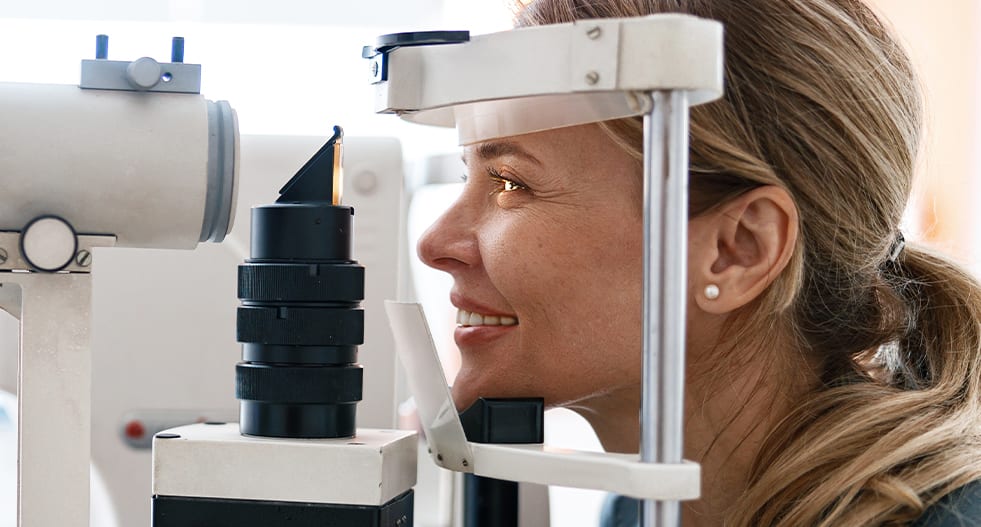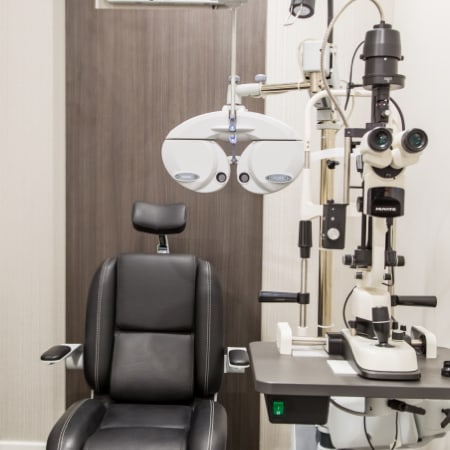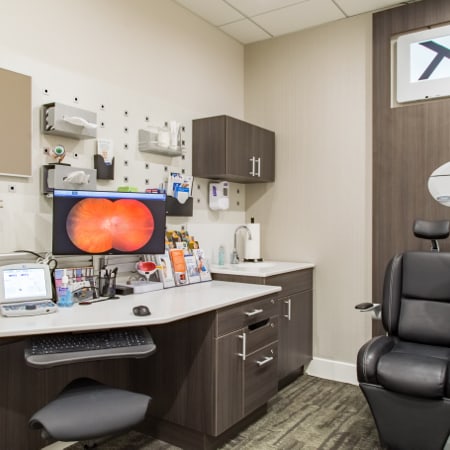Caring for Our Patients with Diabetes
There are currently around 10% of the Canadian population living with diabetes. Having diabetes can require extra care when it comes to your eyes due to the fact that increased sugar in the blood can increase the risk for diabetic retinopathy, which damages the blood vessels in the retina of the eye.
We’re here to provide diabetic eye exams for our patients with diabetes to stay on top of vision and overall health. Talk to us about how diabetes can affect your vision, and book an eye exam.

Diabetes & Your Vision
Diabetes can affect your vision in a number of ways. You may experience blurred vision, changes in prescription, premature presbyopia, cataracts, glaucoma, retinal detachment, and decreased corneal sensitivity in addition to diabetic retinopathy.
While there is an increased risk for these symptoms and conditions, regular eye exams can help to diagnose and treat any eye conditions before they progress.


Our Diagnostic Technology
During a diabetic eye exam, we use a variety of modern tools and devices to get a close-up look at the eye to better diagnose any conditions or abnormalities. Using this technology lets us get a thorough examination of the eye to help best preserve your vision health.
These diagnostic tests are not covered by OHIP, but are critical components of a diabetic eye exam. At Upper Richmond Optometry, we strive to provide a high level of care for our patients to help facilitate best outcomes for their vision.
Ultra-widefield retinal imaging is able to capture a wider area of the peripheral retina with imaging technology than traditional retinal imaging. In fact, ultra-widefield retinal imaging captures about 200 degrees of the retinal surface.
Capturing more of the peripheral retinal surface has been helpful in diagnosing conditions such as diabetic retinopathy and retinal detachment.
Fundus photography, or fundus retinal photography, uses a microscopic camera to take detailed images of the inside surface of the eye. This allows us to examine the parts of the eye, like the retina, macula, and fundus and diagnose eye conditions, such as diabetic retinopathy.
Optical coherence tomography (OCT) is an imaging technology that uses light rays to take layered images of the retina in order to determine retinal thickness. An OCT Angiography uses this technology to take imaging of the blood vessels and tissue in the eye. The images taken by OCT can assist in understanding how a condition is progressing or finding abnormalities in the retina (the light-sensitive tissue at the back of the eye).
How Diabetes Impacts Vision
Diabetes can heighten the risk of several different conditions that can impact your vision if left untreated, including:
Diabetic retinopathy is a primary concern for vision loss associated with diabetes. Many diabetic eye diseases can be challenging to detect without a comprehensive eye exam, as they’re often asymptomatic in the early stages.
Understanding Diabetic Retinopathy
If diabetes is not cared for properly, a complication called diabetic retinopathy can occur. Diabetic retinopathy is a condition where the blood vessels in the retina start to swell or leak. Early stages of diabetic retinopathy can exhibit no symptoms, but some signs can include:
- Spots or floaters in your vision
- Blurred vision
- Difficulty seeing at night
Staying on top of your comprehensive eye exams and your overall health can help prevent serious complications related to diabetes and your eyes.

Here to Walk You Through Diabetes & Your Vision
If you are living with diabetes, you may not realize the way it can impact your vision. Book an eye exam, and let’s monitor your ocular health.















